JAJSGC9B October 2018 – May 2019 TPS22919
PRODUCTION DATA.
6.7 Typical Characteristics
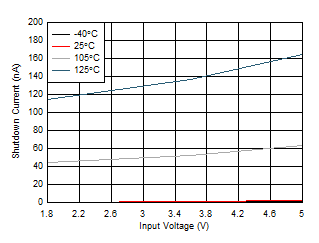
| VON ≤ VIL | ||
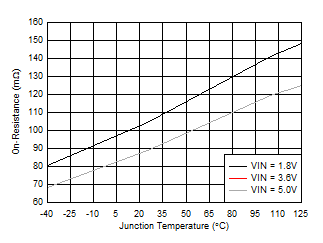
| ILOAD = –200 mA | ||
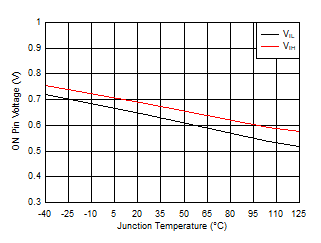
| VON ≤ VIL |
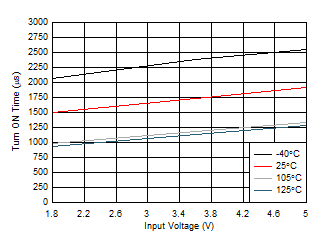
| CL = 0.1 μF | RL = 100 Ω | |
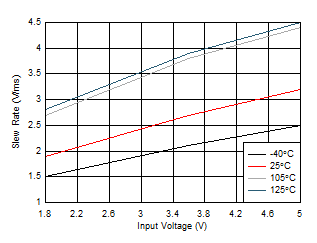
| CL = 0.1 μF | RL = 100 Ω | |
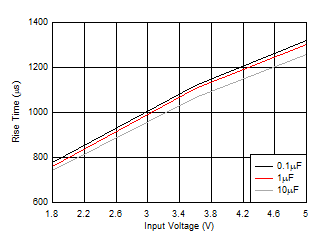
| RL = 100 Ω | TJ = 25°C | |
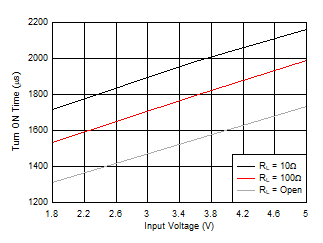
| CL = 0.1 μF | TJ = 25°C | |
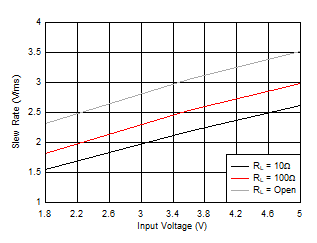
| CL = 0.1 μF | TJ = 25°C |
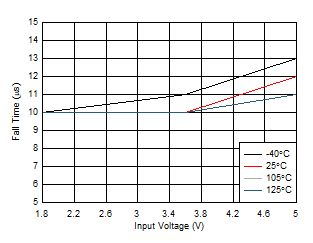
| CL = 0.1 μF | RL = 100 Ω | RPD,QOD = Short |
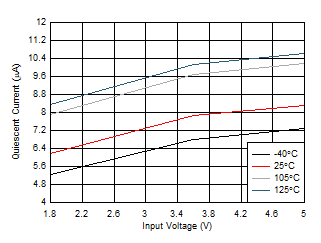
| VON ≥ VIH | ||
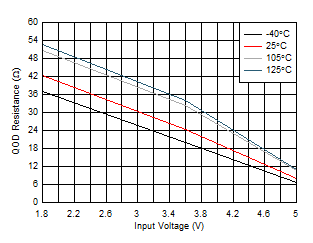
| VON ≤ VIL | ||
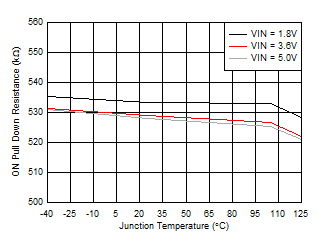
| VON ≤ VIL |
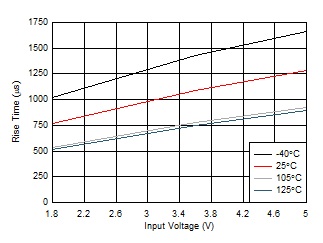
| CL = 0.1 μF | RL = 100 Ω | |
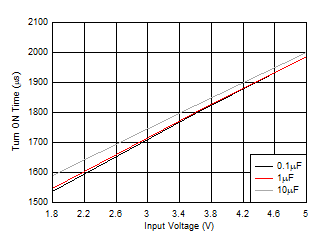
| RL = 100 Ω | TJ = 25°C | |
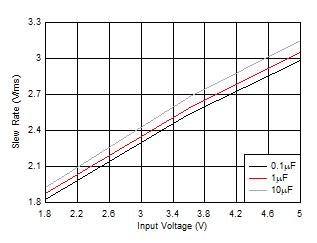
| RL = 100 Ω | TJ = 25°C | |
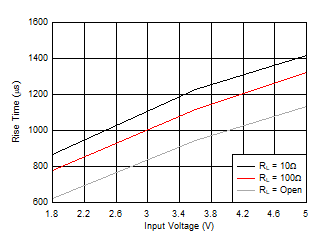
| CL = 0.1 μF | TJ = 25°C | |
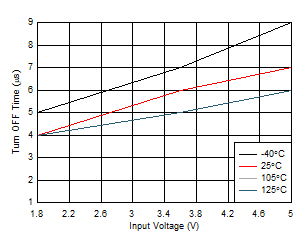
| CL = 0.1 μF | RL = 100 Ω | |
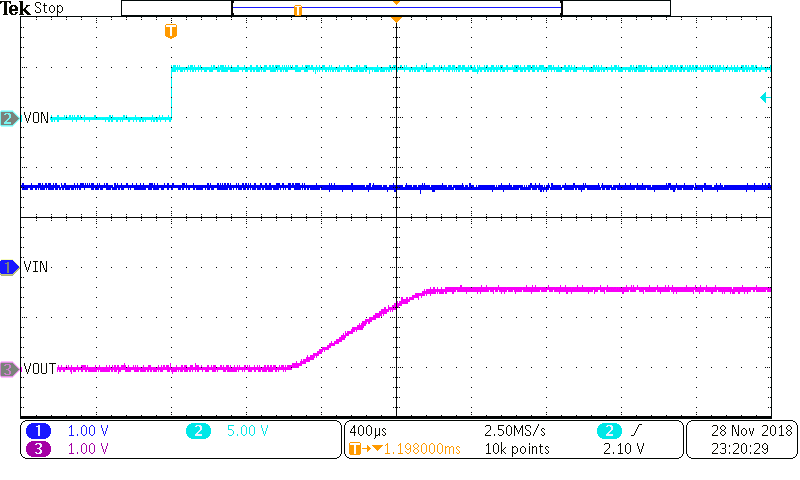
| CL = 0.1 μF | RL = 100 Ω | |
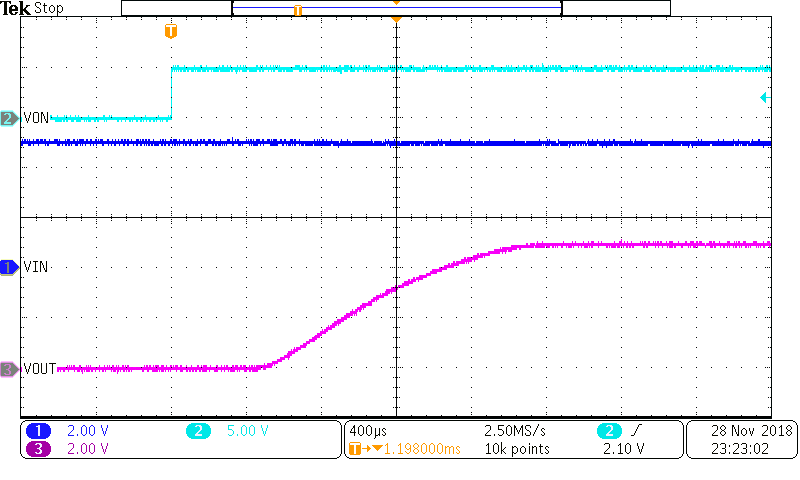
| CL = 0.1 μF | RL = 100 Ω | |
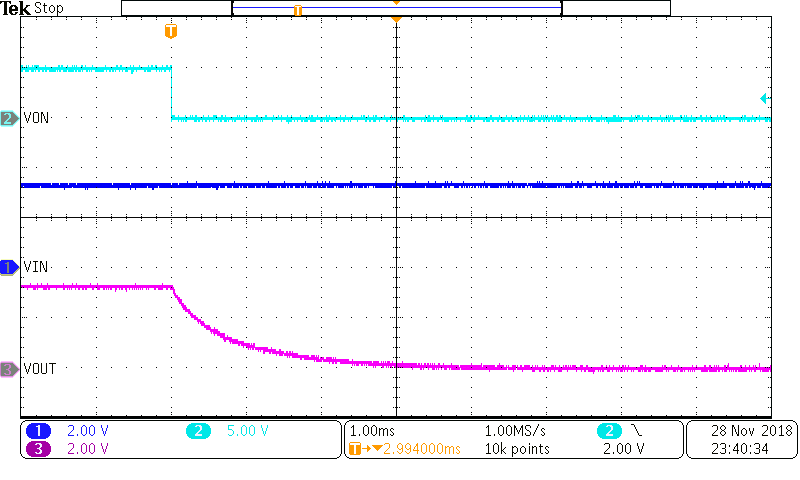
| CL = 10 μF | RL = 100 Ω | |
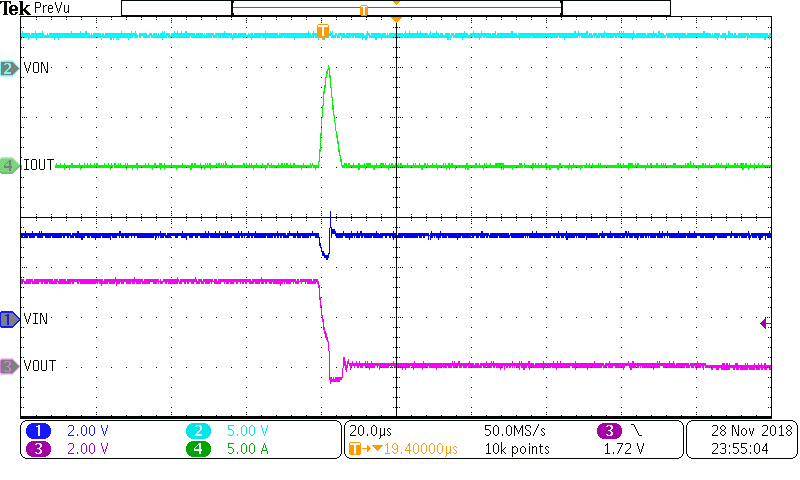
| VIN = 3.3 V | ||
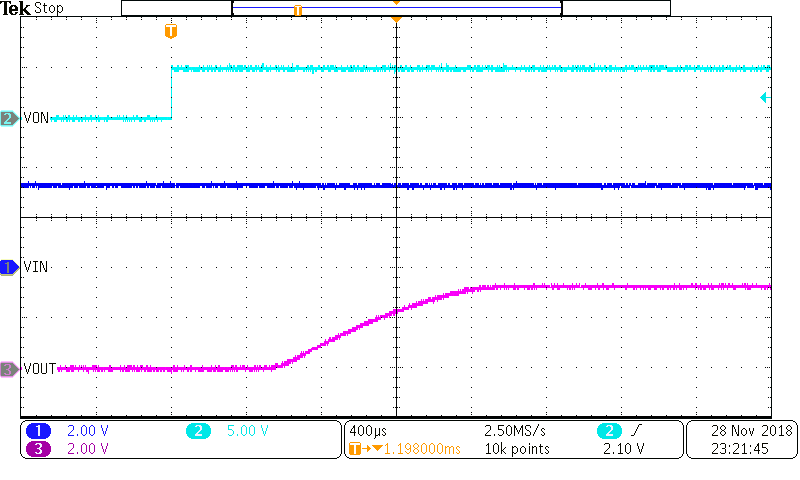
| CL = 0.1 μF | RL = 100 Ω | |
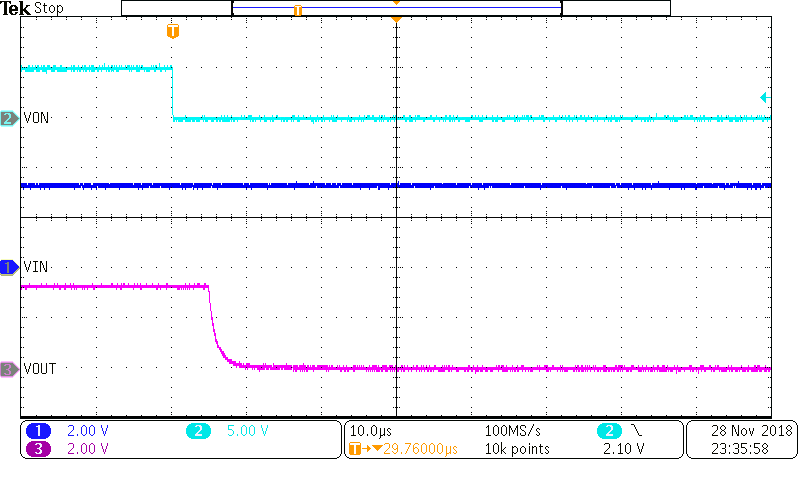
| CL = Open | RL = 100 Ω | |
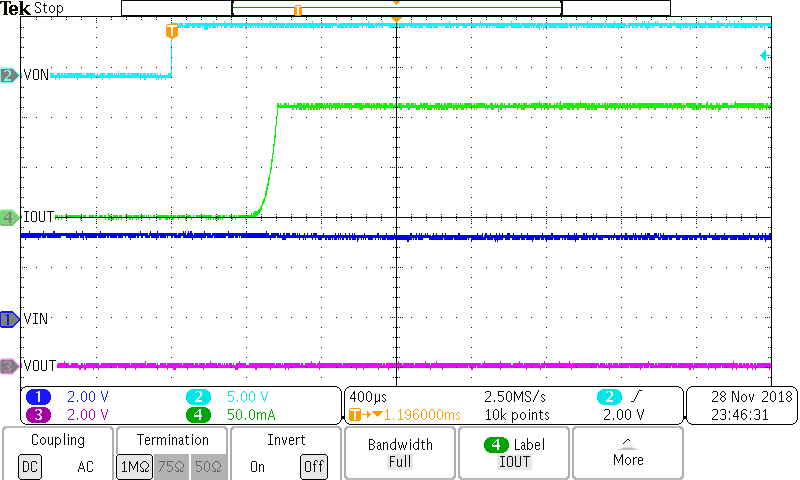
| VIN = 3.3 V | ||
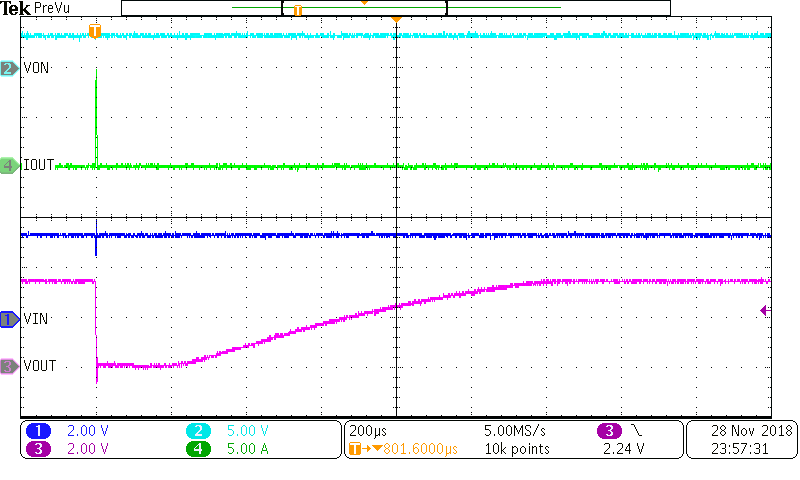
| VIN = 3.3 V | ||